How To Create A Journal Book
Everything You Wanted to Know About My Book Journal
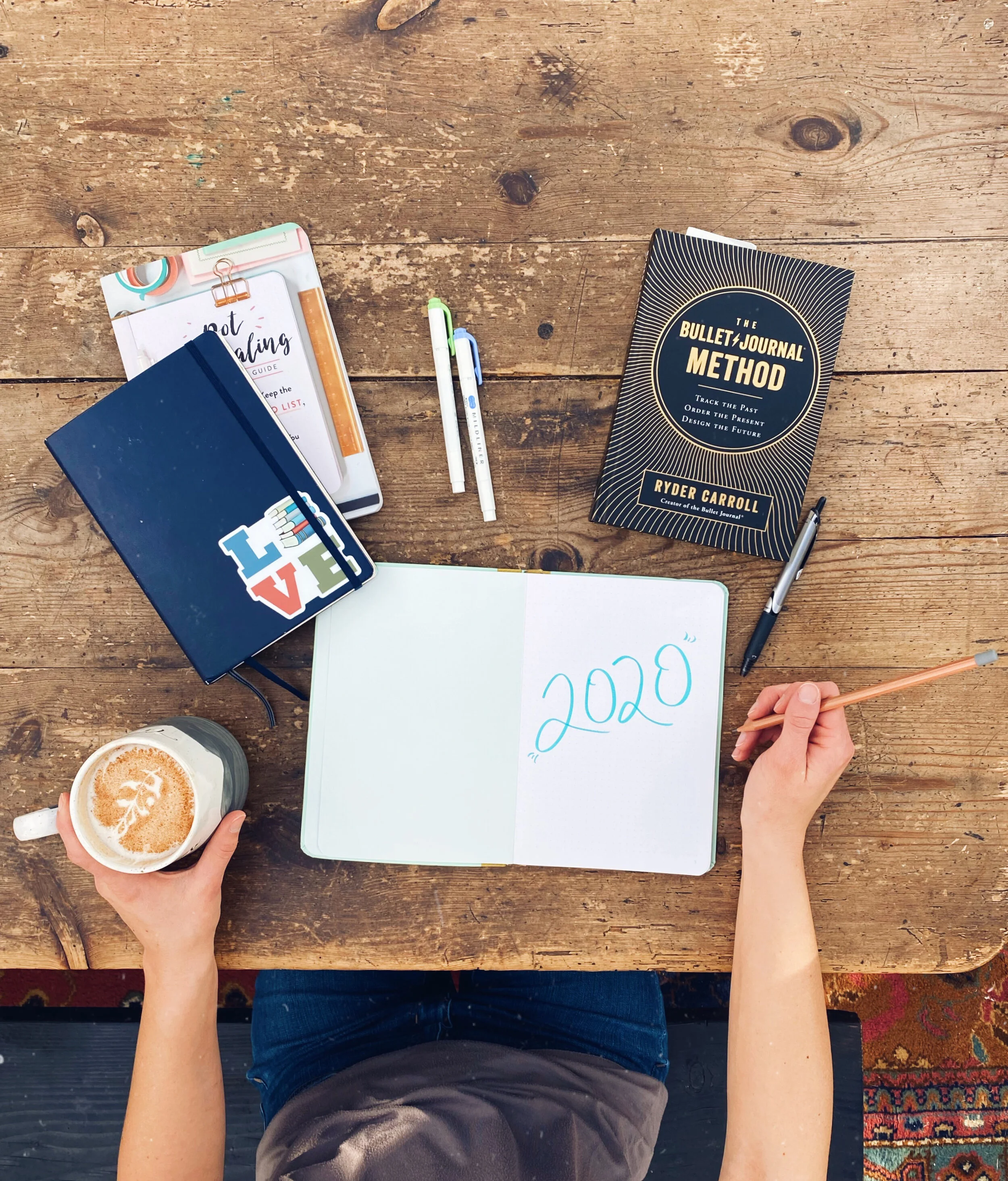
Affiliate links used below. As an Amazon Associate I earn from qualifying purchases.
This month, I sat down to set up my 2020 book journal and realized I had been book journaling for three years. I still feel so new at this, and I'm changing my process all the time. But I wanted to share what I've learned along the way and all the fun tools to make your stationary-loving heart happy.
First - a book journal is not a necessary tool to having an amazing reading life.
The last thing I want to do is pressure you into feeling you have to add one more thing to your life, if it doesn't bring you joy or make your reading life better. I have always been a pen-in-hand person. I have dozens of journals in storage tubs, dating back to my early teen years. Starting a book journal was a natural progression for me, after I read about Anne Bogel's process on Modern Mrs. Darcy.
Book journaling may not be for everyone, and that is totally fine.
I am writing to: those who already journal and are looking for more ideas; those just starting off who need a starting point; and people who are playing around with the idea and want a little push in the right direction.
There are so many different reasons you may want a book journal: to track your reading, list books finished and abandoned, remember books you want to read, and probably even more than I can think of. You may have all of these reasons, or none of them. But it's helpful to have a WHY in mind before you start, because that will help you know what to track, and what to not bother with.
I'm going to approach this a little differently - instead of giving you a blueprint of how to start a journal, I'm going to walk you through three years of my own reading journal. I'm showing you how it looked in the beginning, all, the pages I've tried, and what I'm doing now - plus all the tools that make it happen.
First: the tools.
Let's be honest - the pens and notebooks are a big reason I love journaling. I love the physical act of sorting my thoughts onto paper, adding colors, crossing off tasks, and adding fun tape to a boring schedule.
Most of the writing you'll see in the spreads below is done with my beloved Pilot Precise V5 RT pen. It writes smoothly, doesn't smudge, and can be endlessly refilled with new ink. In my opinion, it is the perfect pen.
I also use a whole slew of felt-tip fine liners, calligraphy pens, and pencils. The pencils I use come from CW Pencil Enterprises, a delightful pencil shop in New York City I visited in summer 2019. I've made one order online from them. If you're new to pencils, try their Pen Lover's Sampler Set to get started.

I also use several other supplies for setting up my journal's spreads. Consider these accessories to the crime…

-
Tombow Permanent Adhesive Applicator - glue tape for inserting anything paper onto the pages
-
Zebra Mildliner Highlighers - must have for journals! I use these all the time
-
Sect Enclosed pencil sharpener - small and efficient.
-
Book darts - great for creating sections in journals or marking frequently used pages
-
Bic Wite-Out - basic but necessary. No one is perfect.
-
Pentel Hi-Polymer Eraser - I am not exaggerating when I say this eraser will change your life.
-
Helix 6" ruler with cork backing - choose the flexible stainless steel option to get cork anti-skid backing
-
MT Book Tape - cute and absolutely essential
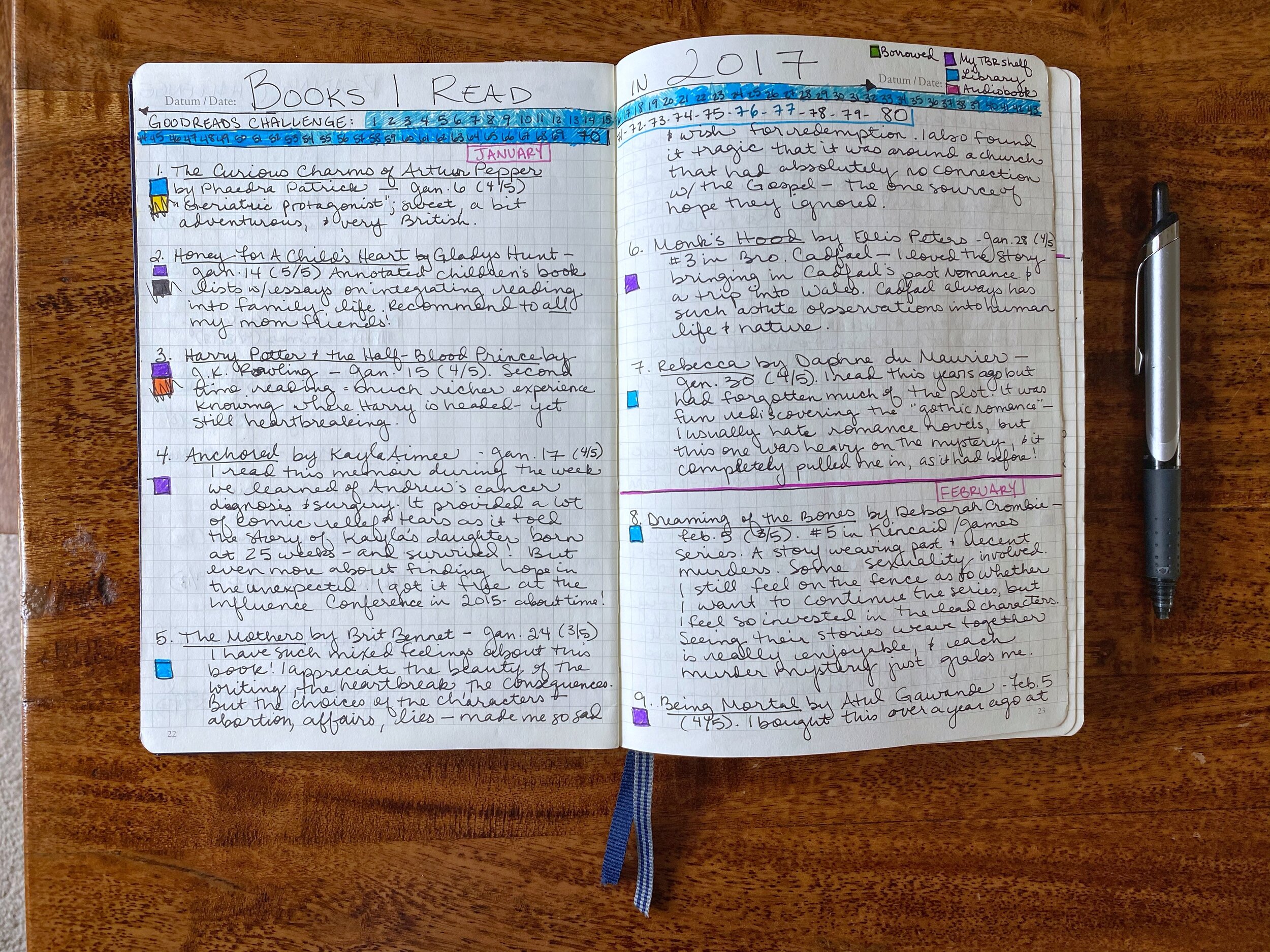
In 2017, I started my journal with numbered entries of books I read, dates finished, and my thoughts. The colored boxes indicated genre, and the blue bar at the top was a running total of books read throughout the year.

By the end of the year, I'd added star ratings and date started and finished. But I was getting a little tired of writing out reviews while also posting thoughts to Instagram and Goodreads. It felt like charting the same information in multiple spots.
I also added a couple of tracking pages for series I wanted to finish (because it's so annoying to not remember which book is next and waste time Googling it and inevitably getting distracted) and mystery series I wanted to try out.


In 2018, I launched the Unread Shelf Project on Instagram. I changed up things again with a reading goals page. I listed out my buying goals, my reading schedule, and series and authors to tackle.
I also started tracking books I acquired in 2018, with the goal to read them all by the end of the year. Clearly, that didn't happen!

Another tracking page I added was a graph to show number of books read every year, with blue indicating fiction and green nonfiction.
Just for fun personal reference: my husband and I lived in Cambodia in 2011-2014, and my first child was born in 2014 while we were there. My daughter was born in 2017. I just love seeing that having kids doesn't necessarily make you read less, but it definitely made me read way more fiction.

Fast forward to 2019 - I was getting a little weary of writing reviews in my journal on every book, and posting Goodreads reviews AND Instagram reviews. So I decided to cut the journal entries and just keep a running list of all the details important to me:
-
Title
-
Author
-
Star rating (the highlighted ratings are 5 stars)
-
Format (audio, hardcover, paperback, library borrow, or publisher-gifted)
-
Reviewed on Instagram and/or Goodreads
-
Genre
-
Dates read.
That is a LOT of data, and somehow it all fits on one line of my journal - and it's exactly what I want to know about every book I read.
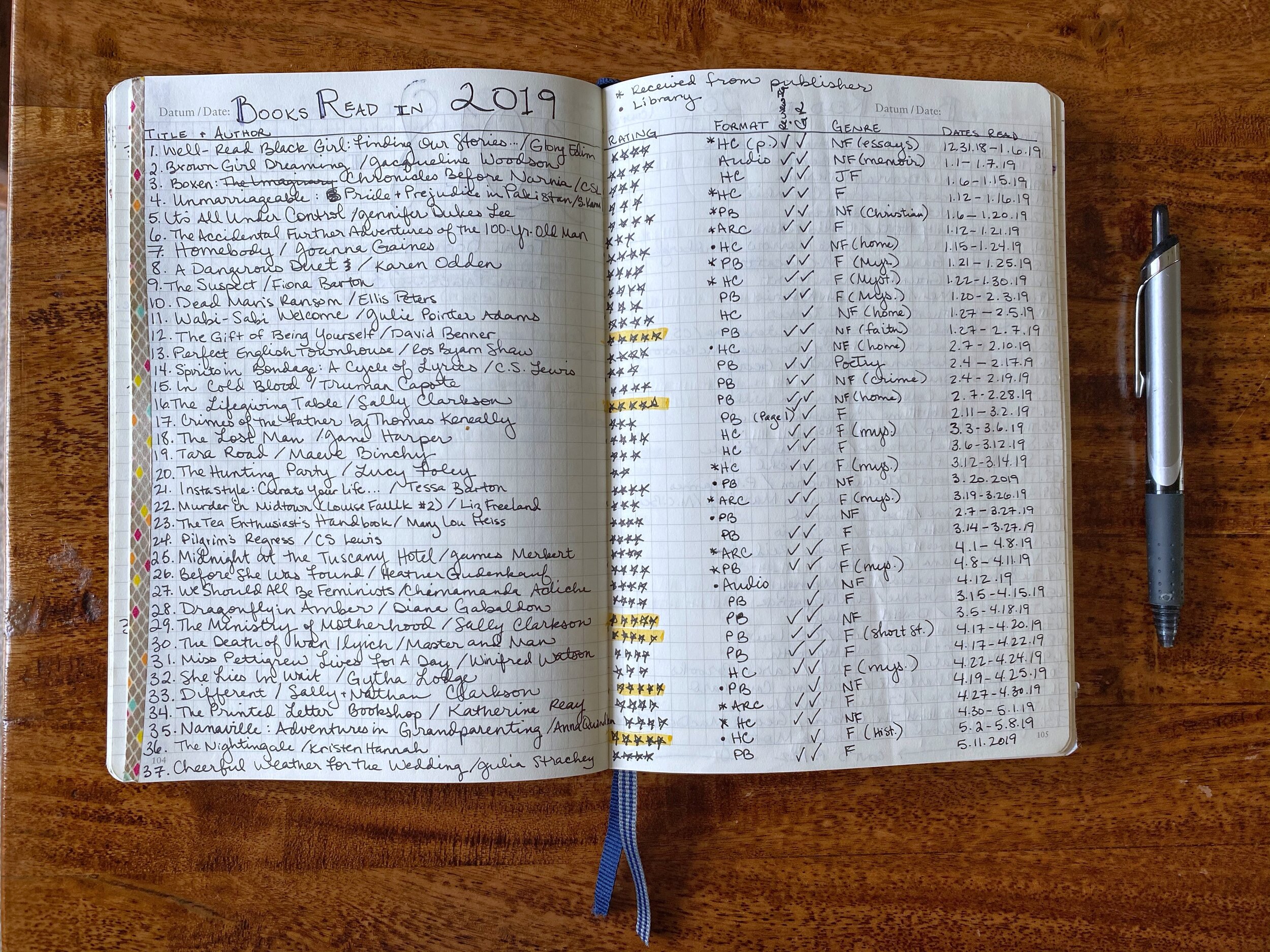


I also revamped a page I'd been using loosely since 2017 but really dug into in 2019 - my stat tracker page. I love tallying up all my books by genre, author, etc. I lost track of books acquired halfway through the year. Nothing's perfect!
And of course you can see my 2019 Unread Shelf Project challenge picks.
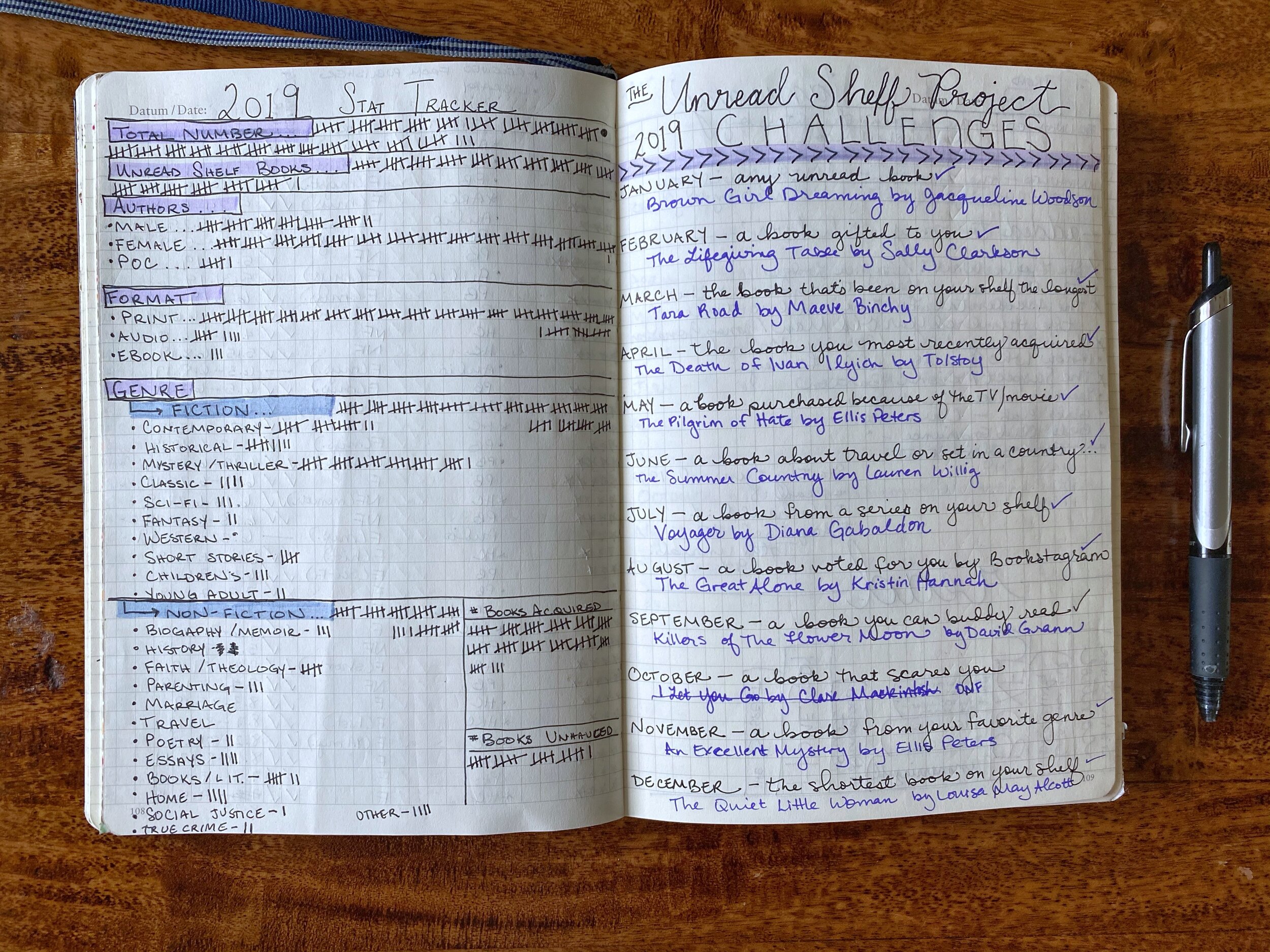
I switched up my monthly tracking to record books finished, acquired, and abandoned. But I did lose momentum the last few months of the year. I think for me, if I try to track too many things in too many places, I just can't keep up with it all.


And now that brings us to…2020!!!! A year where I'm keeping my journal simple.
I'm keeping just a few straight-forward tracking logs: books read, unread books acquired (I'm not tracking books I've read and loved), books abandoned, and book club picks - as well as my stat tracker and Unread Shelf Project picks.

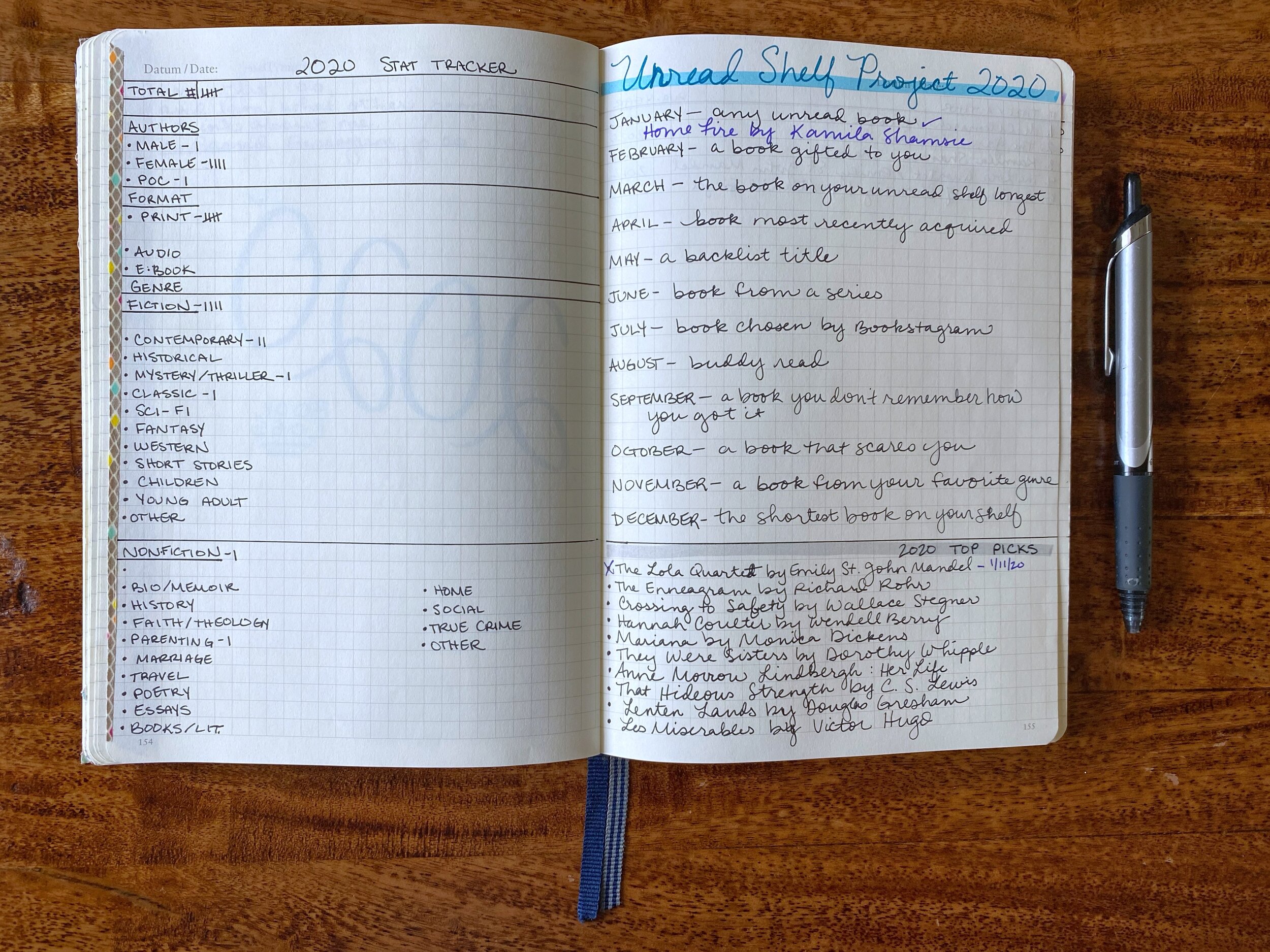



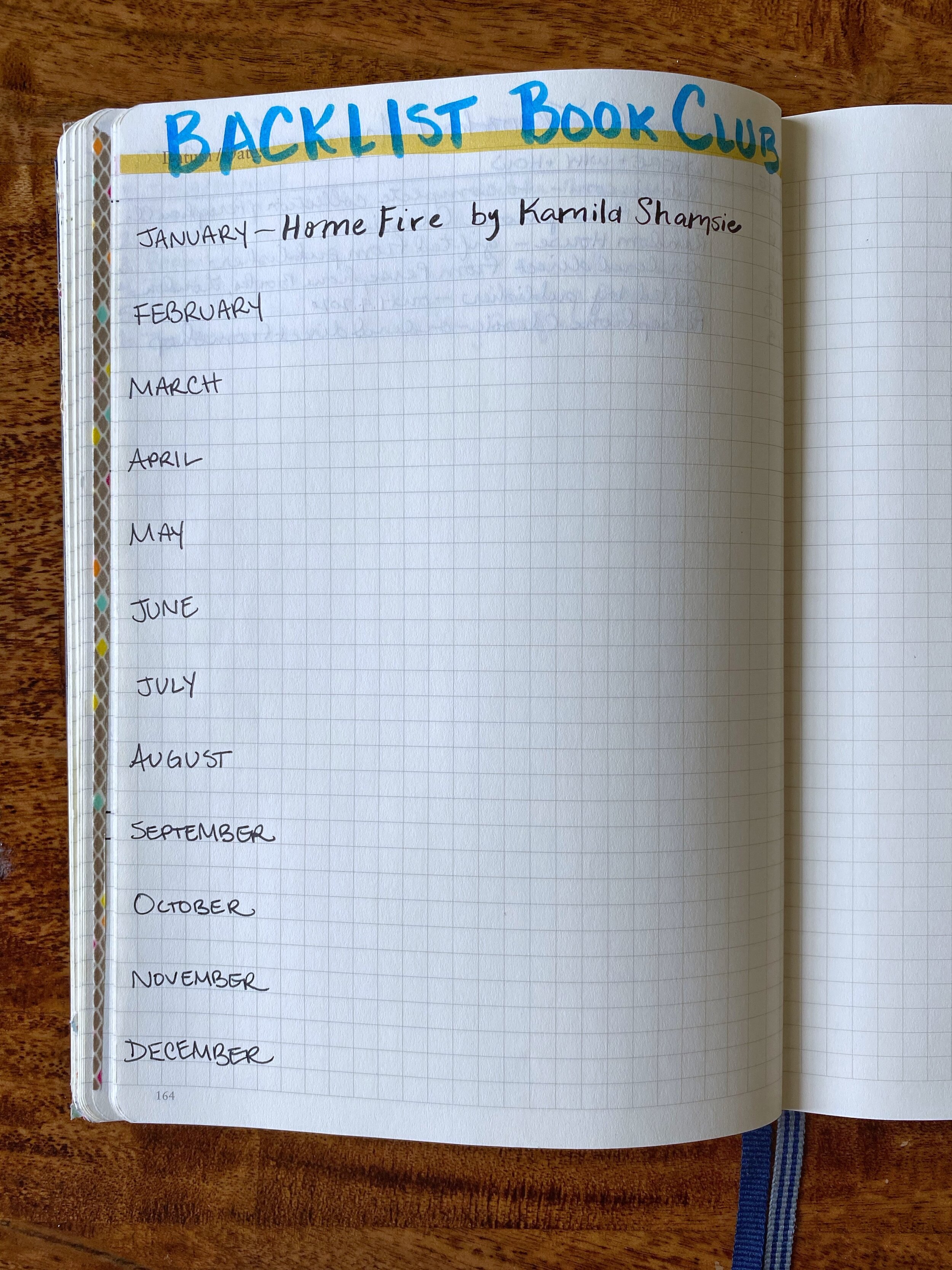
All of the above pages were started at the front of my journal and filled out one after the other.
The below pages were started in the back of my journal - not the best method, but it allowed me to backfill the journal without breaking up my monthly spreads.
I list bookstores I want to visit, book award winners, advanced reader's copies received from publishers, and quotes to remember.
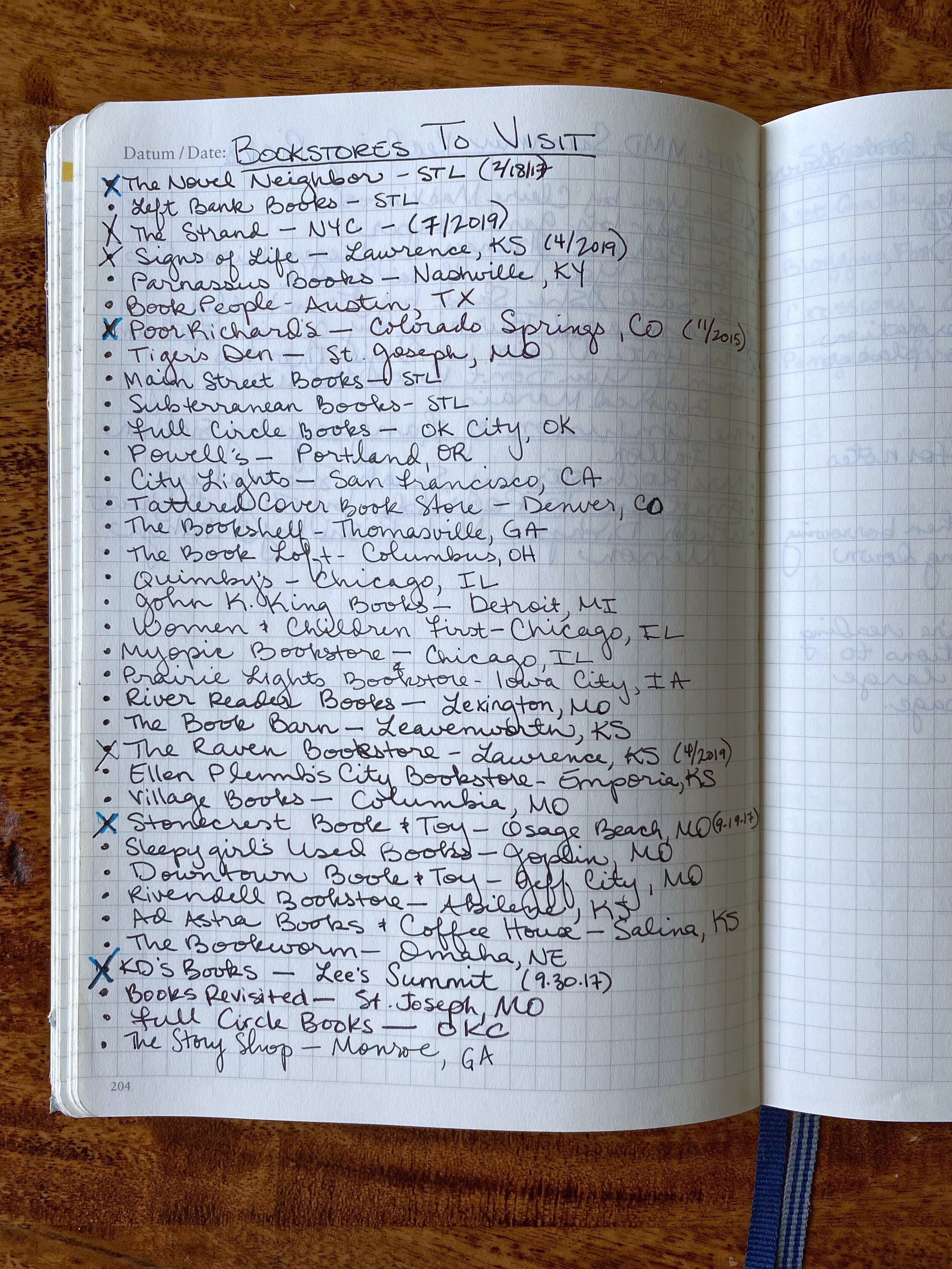

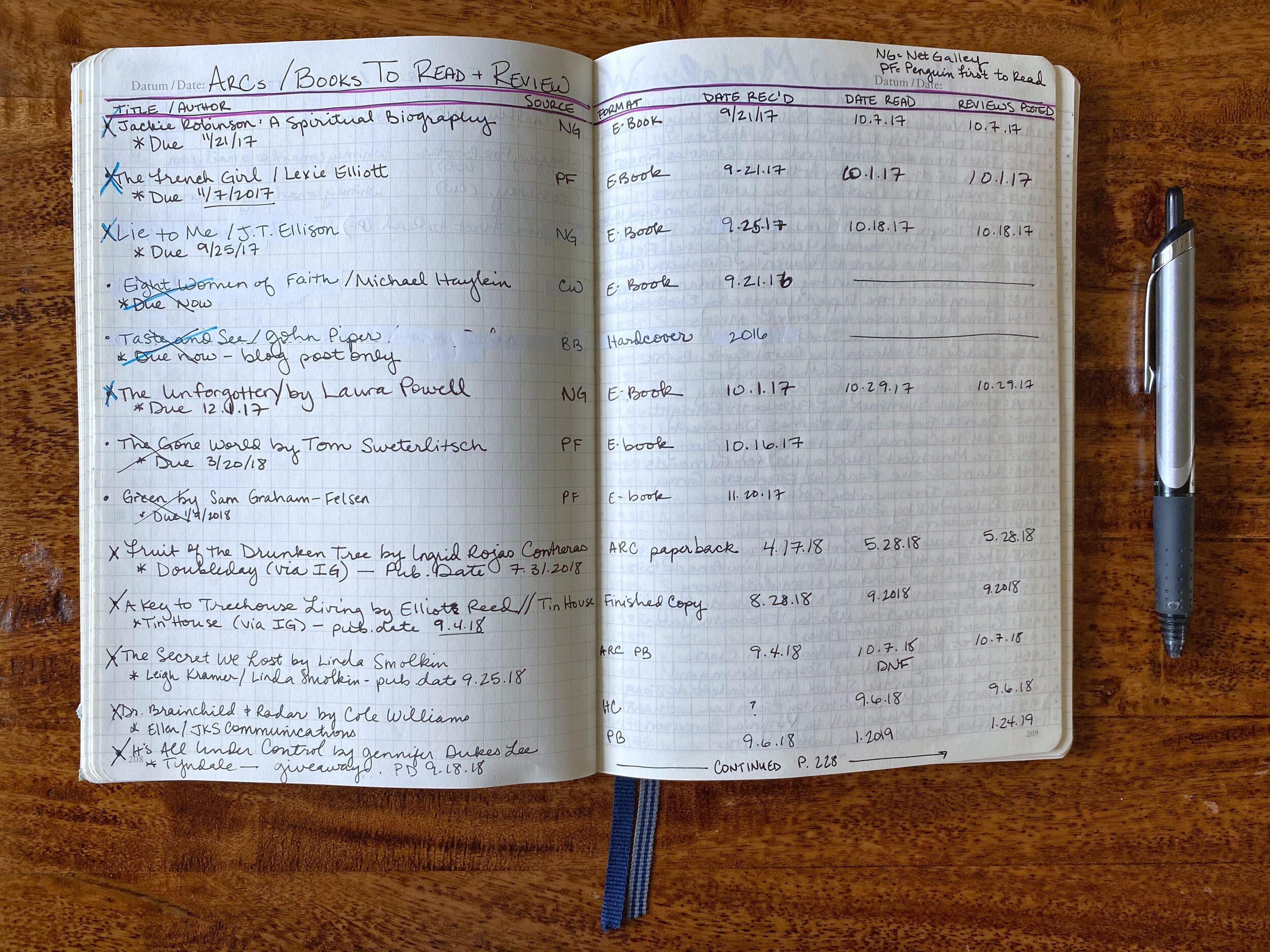
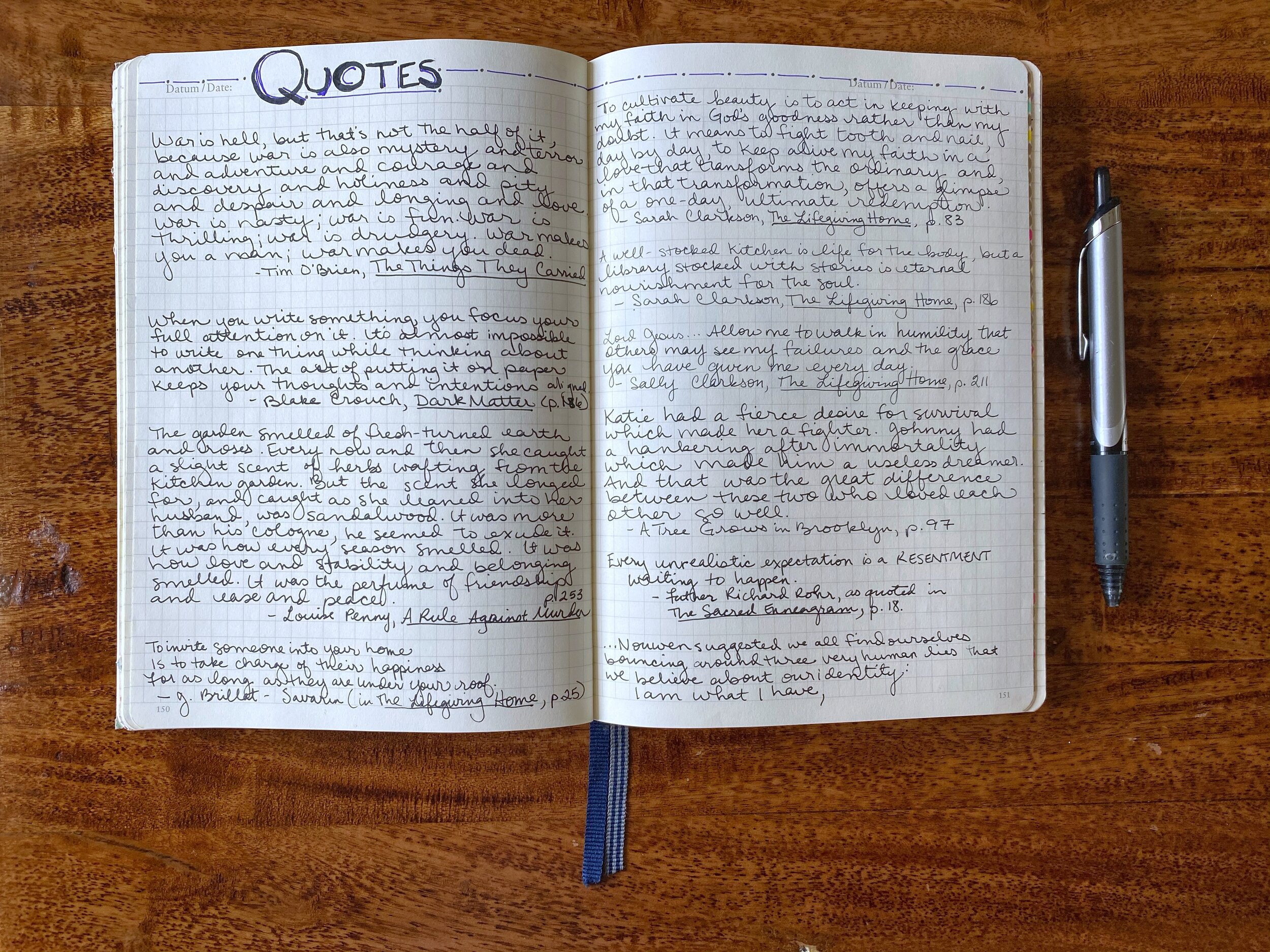
If you've made it this far, congrats! You have now taken the most in-depth look at my reading journal that anyone has ever seen.
I hope this was helpful for you, whether you're a seasoned book journaler or just starting out. I wanted to show you that there's no perfect way to journal, and it's ok to keep experimenting with your process. Every year, my reading life changes, and I want my journal to reflect that.
And I can also say, it's worth the work. It's incredibly satisfying to look back on three years' worth of book lists and see how I've grown and what amazing books I finished. I can reassure you that, a year from now you'll wish you'd started today.
So why wait any longer?
If you keep a journal, I'd love to hear YOUR process and how you do it differently. Leave a comment below so we can all learn from each other!
[Update 2021 - If you want to see how I'm changing my reading journal to a minimalist approach, read my update post HERE!]
How To Create A Journal Book
Source: https://www.theunreadshelf.com/blog/bookjournal
Posted by: serranopentagess.blogspot.com

0 Response to "How To Create A Journal Book"
Post a Comment